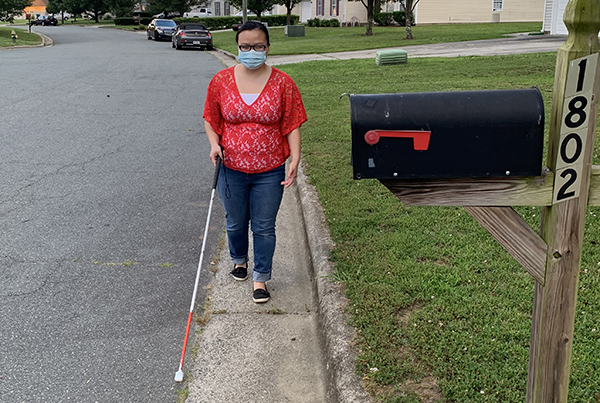In July and August of 2021, the Journey Forward survey was conducted to capture the experiences of adults with low vision or blindness during the COVID-19 pandemic. The findings supplement the results of the 2020 Flatten Inaccessibility1 survey that was administered early in the pandemic, in April 2020. Different questions were asked in the two surveys, with Journey Forward focusing on issues that had evolved or had been introduced since the earlier survey, such as access to COVID-19 testing and vaccines, healthcare, food and supplies, as well as access to voting in the 2020 elections.
The Journey Forward survey was completed by 488 adults in the United States who are blind, have low vision, or are deafblind. Data was gathered through an accessible online survey to aid in understanding the short-term and long-term impact of the pandemic on those with vision loss. Of the 488 participants, 39% reported becoming visually impaired before age 2, 34% between the ages of 2 and 19, 27% in either their 20s, 30s, or 40s, and 4% in their 50s or later. Participants also shared if they identified as someone who is blind (38%), has low vision (52%), or is deafblind (8%); 2% preferred not to answer. Thirty-two percent of participants also identified as having an additional disability. Additional demographic data, including gender and race/ethnicity, are provided in the Appendix.
This report highlights key findings of the Journey Forward survey. Specifically, it describes some of the critical challenges encountered by people who are blind, have low vision, or are deafblind, as safe and efficient transportation options became limited in the extreme during the COVID-19 pandemic and as barriers—including digital accessibility problems and poorly executed policies, such as drive-up only protocols—reduced access to necessities, such as healthcare, medical supplies, and food.
While a few data tables are included in the report narrative, a more comprehensive list of data tables is provided in the Appendix.
The Journey Forward represents a reflection on experiences during a year and a half of the COVID-19 pandemic, through the Summer of 2021. Although the data gathered from the survey participants revealed challenges specific to COVID-19, it also provided insights into the systemic issues that people with vision loss encounter on a regular basis. The report concludes with recommendations that can be valuable in shaping the experiences of those with vision loss today and in the journey forward.
1. Rosenblum, L. P., Chanes-Mora, P., McBride, C. R., Flewellen, J., Nagarajan, N., Nave Stawaz, R., & Swenor, B. (2020). Flatten Inaccessibility: Impact of COVID-19 on Adults Who Are Blind or Have Low Vision in the United States. American Foundation for the Blind. www.afb.org/Flatten
